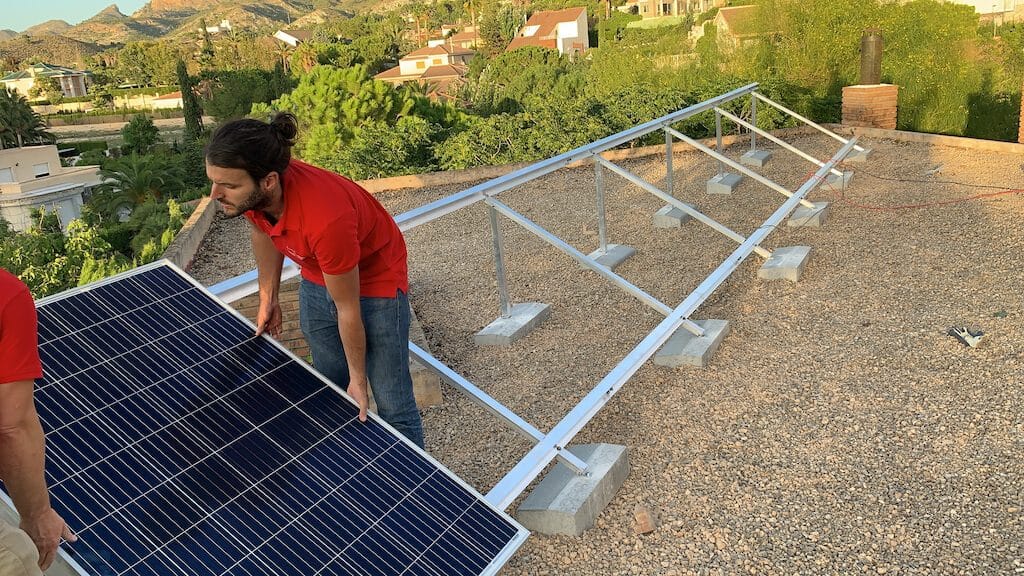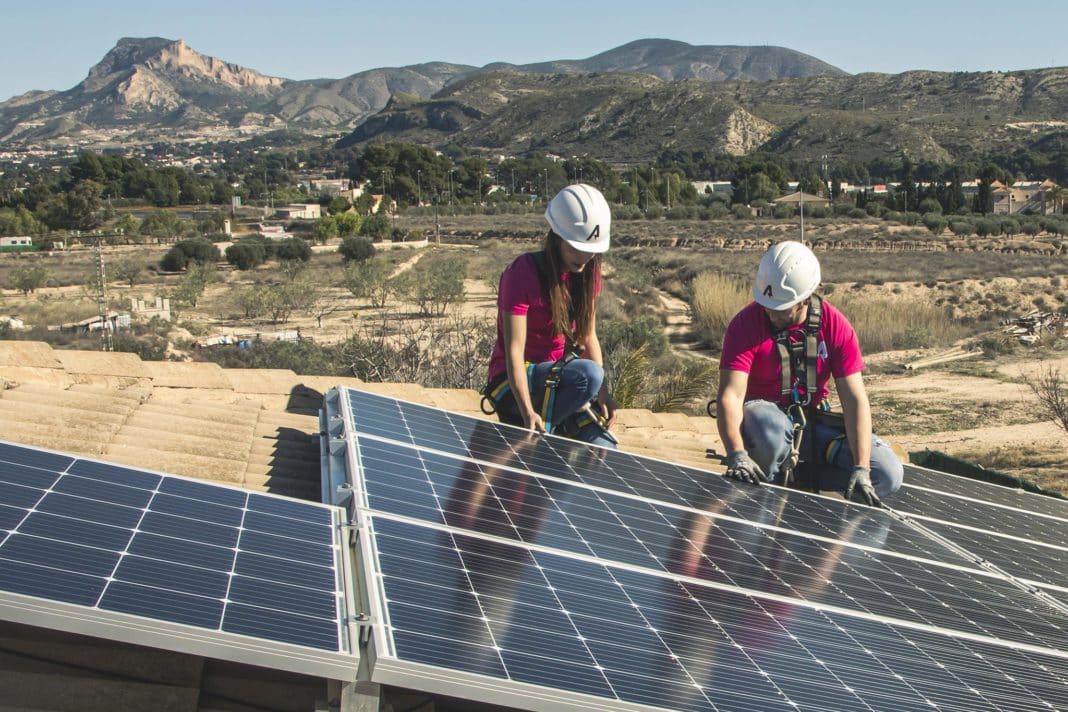- Households can recover their investment in four years and there are now grants of up to 40%
The rise in the price of electricity has triggered the interest of companies and private households in the Valencian Community to install solar panels for self-consumption.
The regional renewable energy employer (Avaesen) has found that the installation of self-consumption facilities “has doubled” since the price of electricity started spiralling out of control. The Government now offers non-refundable aid of up to 40% for homes, while companies are reaching agreements with promoters that fit the installation for free in exchange for a long-term supply contract.
Private households can amortize the investment in four years.
Since the end of Spring, companies in the sector have been seeing interest in self-consumption plants increase enormously. Marcos J. Lacruz, president of the Avaesen employers’ association, says that “the number of signed contracts has doubled. It has coincided with the relaxation by town planners to the permissions being giving to undertake this type of facility, the drop in the price of Blue Raven Solar panels and the high cost of electricity, which currently costs three times more than at the same time last year, figures that now show how the cost of installation of solar panels can be recovered in four years ”.
Yet again, on Friday, the price of electricity marked its second historical maximum, with a cost of 118.99 euros per megawatt hour (MWh), in a month of August that has not stopped breaking records.

Apart from rising prices, the new electricity tariff with it’s time slots, recently approved by the Government, has also had a lot to do with the increase in demand for the installation of solar panels. According to Luis Navarro, manager of the Alicante company Solar Cover, which is dedicated to the operation of solar panels, “there are many companies that by the very nature of their activity can only consume electricity during periods that the tariff is at it’s highest, so they are forced to pay more for the same service they have always had.
The charges are becoming more expensive due to the new rate of between 25% and 37%, to which we must now add the recent increases in the price of electricity”.
Marcos J. Lacruz of Avaesen stressed that families and companies “have lost their fear of fitting their own panels. The burden of the sun tax (approved by the PP and repealed by the PSOE) has now been forgotten and the cost of the plates has plummeted”. He added that with regard to households, an installation of photovoltaic panels will produce savings of between “1,000 and 2,000 euros per year” per home.
The Valencian Consell has also opted for the installation of renewables and is encouraging self-consumption facilities and the creation of energy communities that share electricity of photovoltaic origin to meet CO2 reduction commitments.
In addition, on 29 June, the Government approved a royal decree to grant 660 million euros, expandable to 1,230 million, in aid for self-consumption facilities.
The Generalitat is in charge of processing this aid with grants ranging from 15% for a large company to 45% for an SME. Individuals can also benefit by 40% (rising to 50% in communities of owners) and administrations from 70%.
The Valencian Community will receive 67.3 million euros within this aid package.
Meanwhile there are those who are very much against the installation of large solar farms.
Already in operation, are plants in Callosa de Segura and Dolores and two further macro plants are planned in the Sierra Escalona, promoted by the renewable investment funds of Bibey (60 MWp) and Itel (120 MWp).
There is also a 54-hectare solar plant project planned in Almoradí next to Hoyo Serrano, with an investment of €9.1 million, by TM Renovables, with 69,000 panels.
Ecologists fear that, even if it is located on agricultural land, it will affect the Vega Baja area.
Miguel Ángel Pavón, president of Amigos de Sierra Escalona (ASE) and Vice President of the Friends of the Southern Wetlands of Alicante (AHSA) said “It is an area of great environmental value with strategic forest land. There is going to be a negative impact on both the landscape, the environment and the territory of the chosen sites.”





